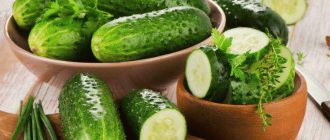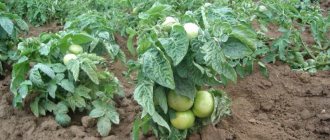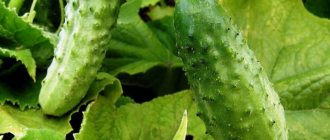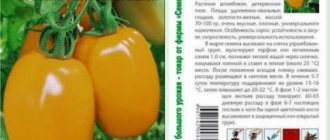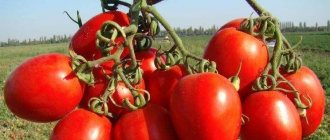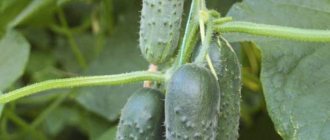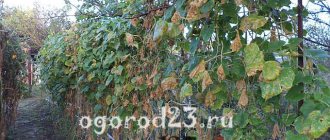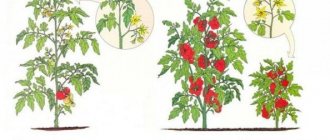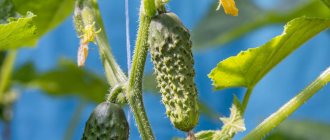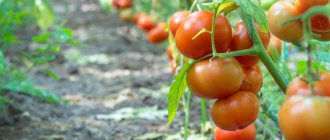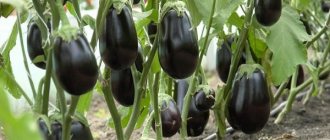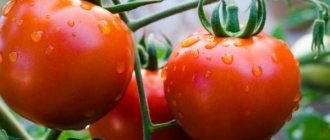Early varieties of cucumbers
Early cucumbers ripen up to 45 days, and ultra-early cucumbers ripen even faster, up to 40. Here are a few of these varieties!
Altai early
This is the case when the name speaks for itself, because the variety begins to bear fruit on the 37th day. It has lumpy, spiky fruits up to 10 cm in length.
Pickling
An excellent bee-pollinated variety for growing in open ground. The vines are long and medium branched, with cylindrical medium-sized fruits up to 12 cm long.
Competitor
One of the favorite varieties of summer residents due to its resistance to spotting and powdery mildew. These cucumbers are grown only in open ground, and ideally on a trellis.
May
A universal hybrid for open ground and greenhouses. It produces large fruits weighing up to 200 g and up to 20 cm long.
Muromsky
Another very early ripening variety with very small but tasty green cucumbers. It bears fruit abundantly, but the crop will have to be harvested regularly so that it does not turn yellow.
Mid-season varieties of cucumbers
Mid-ripening cucumbers can be divided into two large categories: regular medium and medium-late. The first ones ripen in 45-50 days, and the second ones in 55-60.
Libella
The hybrid is notable for its long fruiting, which with proper care will last the entire season. Cucumbers are very aromatic, juicy and tasty, without any bitterness at all.
Picas
A powerful hybrid with the same tall, powerful shoots and dark fruits up to 210 g. The variety is tasty and very productive, and bears fruit quite amicably.
Vyaznikovsky
Small, round cucumbers are resistant to disease and low temperatures. The variety has fairly short vines, so the stems are well ventilated and do not rot.
Athlete
This interesting variety of cucumbers can even be grown at home on a windowsill. Under favorable greenhouse conditions, fruits can grow up to 22 cm.
Nezhinsky
A powerful and completely unpretentious variety is resistant to almost any disease and temperature fluctuations. Its fruits are ideal for canning in any form.
How to plant stepsons in open ground
The process of removing stepchildren depends on the placement of the bushes. The lashes are formed in the form of an inverted pyramid, tied to a trellis.
Important! It is not recommended to perform the procedure until the stem has reached 4–6 cm. Before this, all the shoots cannot be seen, and there is a high risk of ruining the bush.
Visual division into segments
The central lash is visually divided into four segments, which greatly simplifies the pinching process.
Step-by-step execution on segments
First
Located from the root system. Remove all shoots from the sides up to the fourth leaf.
Second
Pinch off the shoots between the fifth and eighth nodes, leaving one leaf and ovary.
See also: How to properly feed cucumbers with urea
Third
Remove everything except two fruits and the same number of leaves.
Fourth
Leave three fruits and leaves on this segment. As soon as four leaves and two fruits form at the top, pinch off part of the bush.
This method of pinching will provide more light, and the cucumbers will be visible. In addition, the garden bed will look well-groomed.
On cucumbers that creep along the ground
Shorten the central lash and cut off the shoots to 4–6 leaves. After this procedure, branches with many female flowers are formed on the bushes.
Features of the final stage
The last pinching is done at the end of July if the bushes were planted in early May. A couple of lateral shoots are left on the main stem, removing dry and unhealthy leaves. The bushes need to be fed with wood ash or peat.
Note! Most packets of seeds show a diagram of how to correctly form this particular variety or hybrid. If there is one, then you need to adhere to it.
Important points
When performing procedures, you need to consider several important points:
- plant bushes at a sufficient distance from each other;
- install trellises close to the seedlings;
- Start pinching from the rhizome of the crop, cutting off inflorescences, tendrils and lateral shoots;
- They begin to form the plant by pinching the leaves above 6, thanks to this the shoots will grow to the sides and it will be easy to tie them up;
- leave no more than four ovaries and three shoots on cucumbers;
- Do not trim short stems;
- Remove diseased, dry and moldy leaves.
Late varieties of cucumbers
Late cucumbers ripen the longest - more than 60 days. They will delight you with the harvest when the early varieties have already finished bearing fruit.
Annika
One of the best varieties for eating fresh fruits, because they are very juicy and sweet. The bushes are tall, but the cucumbers themselves are quite miniature - up to 9 cm.
Aquarius
The lumpy fruits store well, do not change color or taste, and are not bitter at all. The variety is planted in May and is resistant to almost all cucumber diseases.
Regal
Delicious, firm cucumbers with a sweetish taste are ideal for pickling and pickling. The variety is not afraid of disease and cold, bears fruit abundantly and feels good in open ground.
Isis
This wonderful universal variety is valued for its good transportability and excellent taste. It is pleasant fresh, pickled, and even cooked.
Phoenix
Cucumbers of this variety are distinguished by dense, thick skin. Due to this, they are stored for a long time, are easily transported and are well suited for all types of preservation.
Greenhouse varieties
Cucumber variety Murashka F1
This is one of the most versatile varieties - the plants will feel good both in greenhouse conditions and in open ground, they can even be grown on the balcony. Cucumbers do not require pollination, the fruits retain their freshness for a long time, they do not develop bitterness, and the yield is always consistently high. It appears already 40 days after planting the seeds. The sizes are average, there are not too many branches, however, if there are any, then all will be determinate with a predominance of female flowers.
There are many leaves, they are small, smooth to the touch, there are almost no empty flowers. Fruiting is long, the plants are resistant to the most common diseases - powdery mildew and cladosporiosis, but timely care should be taken to prevent diseases such as root rot and downy mildew. The size of the fruits is average - they rarely grow more than 12 cm in length, but they can be collected when they are at least 8 cm. The average weight is about 100 grams. The shape is cylindrical, there are few thorns, but they are very prickly. Cucumbers are universal - suitable for both eating and pickling.
More: Top 10 Best Sweet Pepper Seeds
Advantages:
- Versatility both in terms of cultivation and use;
- High yield;
- Long fruiting period.
Flaws:
- It does not resist all diseases of cucumbers.
Cucumber variety Murashka F1
Cucumber variety Boy with a Thumb F1
It is an early ripening variety that will produce a harvest approximately 35-40 days after sowing. It belongs to the hybrid group and does well in tunnels, spring greenhouses and open ground. The length of the fruit is about 9-12 cm, there are small tubercles on the surface, the weight reaches 70-80 grams. The pulp is aromatic, even overripe cucumbers do not develop voids or bitterness. The seeds are small, almost invisible. The fruits have excellent taste characteristics - they can be used fresh as food, as well as for preservation.
This variety gives optimal yield when grown without seedlings. It is recommended to soak them for several hours before planting them in the soil. Before planting, the seeds are carefully inspected, making sure that they are full-bodied and approximately the same size. If this condition is met, it will be possible to achieve almost 100% germination. Plants should be fed not with chemicals, but with various natural means - droppings, slurry, ash, husks, and so on.
Advantages:
- Very tasty fruits;
- High yield;
- Long fruiting period;
- Ideally resists various diseases.
Flaws:
- Barren flowers are found, especially on branches from the main stem.
Cucumber variety Boy with a Thumb F1
Cucumber variety Benefit F1
This hybrid variety can also be classified as a high-yielding variety; moreover, such cucumbers require virtually no care. It is classified as a mid-early variety, it takes about 50 days from germination to ripening, it is self-pollinating, the flowers are in most cases female, there are practically no barren flowers, fruits are set in bunches of 3-6 pieces. You can remove about 7-8 kg of cucumbers from one bush. In terms of growth conditions, the crop is universal - it can grow in a garden bed, in a greenhouse or in a hotbed; cucumbers can be eaten fresh; they are suitable for any preparation.
It is worth noting that the vine grows quite long, so it will have to be shaped as it grows, especially if it grows on a vertical trellis. The weight of the fruit is about 100 grams with a length of no more than 13 cm. The shape is oblong, there are short stripes on the skin. The taste of cucumbers is pleasant, there is no bitterness. The pulp is quite dense, the fruits tolerate long-term transportation well and are well stored for a long time. Plants are resistant to diseases, lack of moisture, and low temperatures.
Advantages:
- High yield;
- Resistance to adverse weather conditions;
- Unpretentiousness in terms of care.
Flaws:
- The vine is quite long, it must be shaped, otherwise it will negatively affect the yield.
Cucumber variety Benefit F1
Cucumber variety Alekseich F1
The variety is quite popular among summer residents and farmers, largely due to its high yield and rapid ripening of fruits - no more than 45 days pass from the emergence of seedlings to the first harvest of cucumbers (sometimes less, depending on climatic and weather conditions). This hybrid is self-pollinating and feels good under an unheated film greenhouse or in open ground. The plants are not too large, there are few side shoots. It blooms in nodes, each of which produces up to 3 fruits.
The shape of cucumbers is cylindrical, elongated, the skin has green stripes of varying lengths, there are few tubercles, the length is in the range of 7-9 cm and weighs about 70 grams. The pulp is crispy, dense, without bitterness. The fruits are suitable for both fresh consumption and canning. From one square meter of crops you can harvest about 14 kg. It can be grown as seedlings; it can be planted in open ground when the soil warms up to about 15-16 degrees. It is recommended to plant no more than 5 shoots per square meter; if the cucumbers grow on trellises, then there should be even fewer of them - 3 or 4 plants per square of soil. The soil is pre-fertilized by adding leaves or sawdust before winter.
Advantages:
- Friendly formation of fruits, due to which a high yield is immediately ensured;
- Long-term fruiting;
- Resists well against any diseases.
Flaws:
- The soil must be prepared for this variety at the end of the previous season.
Cucumber variety Alekseich F1
Cucumber seeds Sankina love F1
The most productive hybrid among all the best varieties of cucumbers - fruiting begins early and continues for quite a long time. All plants are of the female flowering type and have almost no branches, which greatly facilitates their care. It blooms in nodes, and one node can contain up to 12 fruits. It is generally accepted that this variety is ideal for canning and pickling in a jar, but it is also good for food: the fruits are not bitter, have thin skin and dense, crispy flesh. There are pronounced tubercles on the surface, the length of cucumbers is within 8-11 cm, they withstand transportation well even over long distances. It resists diseases such as olive spot and common cucumber mosaic virus. Not sensitive to all types of powdery mildew, including downy mildew.
More: Top 10 best stationary blenders, how to choose a stationary blender
Experienced gardeners recommend forming plants strictly into one stem - this way they will receive a sufficient amount of sunlight, and all the necessary nutrients will arrive in the set fruits. After the first harvest is obtained, the cucumbers should be fed with products high in nitrogen. They should grow quite far from each other - up to two shoots are allowed per square meter. This variety loves abundant watering, always with warm water. The harvest should be harvested daily - if you follow these recommendations, you can achieve record yields: from one square meter you can get about 40 kg of cucumbers during the season.
Advantages:
- Very high yield;
- Disease resistance;
- Slight spreading of bushes.
Flaws:
- With proper care, they don't exist.
Cucumber seeds Sankina love F1
The best varieties of cucumbers for greenhouses
It is good to grow large and juicy cucumbers in greenhouses, because there are the most stable conditions for them. But the crispy babies feel great too!
Absolute
Even at low temperatures, Absolute produces a stable and rich harvest. The bushes grow strong, unpretentious and produce dark cylindrical fruits up to 12 cm, which are good fresh and for sale.
Arctic
A very early self-pollinating hybrid can be grown in several passes per season. In greenhouses it is much more resistant to disease than other varieties.
Aristocrat
In a well-heated greenhouse, the first harvest of cucumbers can be harvested as early as May. The variety is resistant to drought and temperature changes, and also bears abundantly with juicy and tasty fruits up to 11 cm.
Artist
The main advantage of the variety is its resistance to lack of light, so such cucumbers can be grown even in autumn and winter. Artist is also famous for its resistance to mosaic and powdery mildew.
Ajax
One of the most productive greenhouse varieties among bee-pollinated varieties. Cucumbers grow small, but from 1 hectare with regular fertilizers and watering you can collect a fantastic 1000 centners.
The purpose of cucumbers, why do we plant them?
The purpose of the selected variety must always be taken into account. Salad, pickling or canning cucumbers, you already know your tastes in order to give preference to a certain variety. There are universal varieties that are good everywhere, in jars, in barrels, and in salads.
Typically, salad varieties are more tender, they have smooth and thin skin, with a sweetish taste. And for canning, there are good varieties and hybrids that are just right when other vegetables appear, which is convenient for making assorted dishes or some complex salads. Such varieties are usually thick-skinned and contain large amounts of pectin.
Decide what is most suitable for you, especially since now most often they write on the packaging about the purpose: “ideal for pickling” or “universal variety”.
Variety or hybrid, which is better?
It also all depends on your tastes and growing conditions. some plant several varieties and would not exchange them for anything; they prepare the seeds themselves and are completely satisfied.
Novice gardeners most often choose hybrids marked F1. There is no point in collecting seeds from them; if plants grow from them, they will not retain all their parental qualities.
But they are ideal for a greenhouse. most hybrids are self-pollinating, which is very important for an enclosed greenhouse space. They do not need to be pinched, as they do not produce as many side shoots as varietal ones.
Remember that all cucumbers are tropical vines. if it grows in a northern climate, with temperature changes and lack of sunlight, then in southern latitudes it will also grow and bear fruit well.
Cucumber varieties are preferred by those who are accustomed to collecting the seeds themselves and growing them in open ground, in bushes or on a trellis. And of course, all our varieties are bee-pollinated and it is not advisable to grow them under cover in a greenhouse, otherwise insects will not approach them.
Why do bitter cucumbers grow?
Sometimes you get so upset when you bite into a cucumber and it’s impossible to eat, it’s so bitter. In jars, this bitterness goes away over time, but the taste is no longer the same. Why do cucumbers grow like this? Can this be avoided? I often receive questions like this from my readers.
The change in taste and the appearance of bitterness depend on unfavorable conditions for cucumbers. If there are large temperature changes between day and night, this affects the taste. Extreme heat in a greenhouse can not only result in outbreaks of cucumber diseases, but also a change in taste. If the plants do not have enough moisture, then bitterness also appears. But it mainly affects cucumbers, which grow closer to autumn, when there is a strong drop in temperature at night.
There is a way out of this situation; now many indicate on seed bags that the variety is genetically without bitterness. Please pay attention to this when purchasing. This is exactly the variety, this is everyone’s favorite Zozulya cucumber.
The best varieties of cucumbers for open ground
In open ground, it is especially important to take into account the specifics of the soil and weather of the region. Here you cannot avoid frost, wind and other external factors.
fontanel
The universal hybrid produces wide, light-colored fruits with yellowness and pronounced stripes. They are sweet, crispy and travel well.
Director
The cucumber pulp is not too crunchy, but homogeneous and without voids. Director is one of the most popular salad varieties.
Paratunka
The universal variety is grown safely throughout Russia because it is equally resistant to drought and frost. The bushes are not prone to thickening and produce a stable harvest, but it should not be allowed to overripe.
Uranus
A Japanese variety with small shortened fruits up to only 70 g. Cucumbers are resistant to various external conditions, and the fruits are very neat in shape and size.
Othello
The Czech variety produces small fruits with frequent light thorns, by which it is easily recognized. Cucumbers are very crispy and aromatic, and are not prone to overgrowing.
The highest yielding varieties of cucumbers
Under favorable conditions, cucumbers always produce a good harvest, but even among them there are real record holders.
Suzanne
The Czech hybrid feels equally good in open ground and in greenhouses. The fruits are small, up to 8 cm, but up to 10 kg can be collected from 1 square.
Voronezh medium-late
If you need a rich harvest later, you simply cannot find a better variety. The fruits are quite large, up to 15 cm and up to 120 g, and up to 12 kg of cucumbers are collected from 1 square.
Sparta
A very early variety is resistant to most cucumber diseases. From 1 square it produces more than 11 kg of light green salad fruits.
Crisp
Another variety of cucumbers with an eloquent name. The fruits grow quite large, up to 120 g, with a beautiful bright color. From 1 square you can harvest up to 9 kg of crop, and this is an ideal choice for pickling.
Zozulya
An ideal variety for pickling, canning and salads. It is self-pollinating and does not produce seeds, but from 1 square you can easily collect up to 16 kg of cucumbers.
Cucumbers all summer
Early ripening (32-45 days) seedlings are quite frost-resistant and are not afraid of moderately low temperatures. When choosing such types it is advisable. Keep in mind that already in July the plants may dry out, losing the entire harvest.
Most often, fans prefer the following: Cascade, Altai early, Competitor, Baby; hybrids Zozulya, Graceful, Zyatek, Veselaya Kompaniya, Vesna, Advance.
- Cucumbers in a barrel - simple instructions on how to plant and tips on how to grow cucumbers (115 photos and videos)
Trellis for cucumbers: we build simple and convenient trellises with our own hands (135 photos and videos)
Cucumbers in a greenhouse: detailed instructions for growing greenhouse cucumbers with your own hands (105 photos + video)
Cucumbers of medium ripening (up to 50 days) ripen by July, their taste is soft and pleasant, slightly sweet, they are easily transported, and are stored for a long time.
Many Russian regions are characterized by late summer, and these breeds take root well in such areas. Among them are hybrids: Claudia, Lilliput, Farmer, Picas, Libella, Mother-in-law.
Late cucumbers (more than 50 days) can bear fruit until October, provided there is a warm autumn. They have strong rhizomes, which gives a stable harvest. They are most suitable for home preparations. These are such articles as: Nezhinsky, Chinese climbing, Aquarius, Winner.
Self-pollinating or parthenocarpic varieties of cucumbers
Self-pollinating cucumbers are not pollinated by bees and are selective hybrids. Their main advantage is the ability to flexibly correct certain characteristics - equalize the size, get rid of bitterness, and ensure shelf life.
Adam
Early maturing hybrid for open ground and temporary greenhouses. It is quite productive and produces tasty, versatile, medium-sized fruits – up to 10 cm.
Garland
A universal and fairly large hybrid with powerful shoots and tall fruits up to 130 g. The variety is very resistant to lack of sun, so it can be grown even in an apartment.
Alex
A medium-sized universal variety of cucumbers with short dark fruits and noticeable stripes. It is very resistant to mosaic, spotting and powdery mildew.
Meringue
Very tasty small cucumbers without any bitterness, good for processing and fresh. The variety is resistant to viral and fungal diseases.
Hermann
These cucumbers have an impeccable presentation, so they are good for sale and for pickling. The fruits are bright, medium in size, and can be harvested up to 9 kg per square.
Types of cucumbers depending on their purpose
There is also a common classification of cucumbers that “serve for specific purposes” - are you going to eat them fresh in salads or do you want to store them for a long time, will you pickle them or pickle them?
- Pickling cucumbers are ideal for pickling, canning or pickling. Their sizes, as a rule, do not exceed 10-15 cm. They are also suitable for fresh consumption, because... have thin skin and juicy pulp.
For pickling, select cucumbers of approximately the same size
- 11 popular varieties of cucumbers for pickling and canning
Do you want tasty and aromatic cucumbers? Are you dreaming of crispy gherkins? Then quickly read our article.
- Gherkins . Small cucumbers 5-8 cm in size with a pleasant taste and crispy texture. Their size and thin skin have earned them the nickname “snack cucumbers.” Gherkins usually have an elongated cylindrical shape and are often grown in a greenhouse.
A French chef received 12,000 francs from the government for discovering the secret of canning gherkins.
- Salad cucumbers . Cucumbers of this type cannot be confused with any others. They are elongated and long, with a dense, smooth skin. Salad cucumbers are consumed fresh or added to salads. But they are not suitable for canning or pickling - the thick skin does not absorb brine well. It is these cucumbers that are most often sold on the market than others, since they last longer than their “brothers”.
The peel of cucumbers contains a large amount of fiber, but it also actively absorbs harmful substances.
Cucumbers can also differ in the color of their spines:
- white-thorned - have a thick skin, are easily transported, but are of little use for pickling, and are consumed mainly fresh;
- black-thorned - have a delicate skin, which is why they are widely used for pickling and pickling, but the fruits quickly ripen and turn yellow.
The best varieties of cucumbers for the Moscow region
The Moscow region has some of the most favorable conditions for most varieties of cucumbers. But you need to take weather changes into account!
Murashka
An early ripening variety does not require pollination and produces medium-sized fruits up to 12 cm with pronounced tuberosity. There is no bitterness in them at the genetic level, so these cucumbers are good fresh and for preservation.
Benefit
One of the most delicious varieties for the Moscow region with fairly large fruits up to 120 g. It is very resistant to rot, fungus and powdery mildew.
Emelya
An ideal choice for heated greenhouses in the Moscow region. The variety is interesting due to its unlimited growth of vines and large, stable yield.
Erofey
A branched and tall bee-pollinated variety of cucumbers for open ground in the middle zone. It produces small elongated cucumbers up to 7 cm.
Masha
A very early ripening hybrid is distinguished by long-term fruiting. It produces neat gherkins without any bitterness and with excellent taste.
The best varieties of cucumbers for the Urals and Siberia
In the Urals and Siberia, first of all take into account possible frosts and a short warm season. The following varieties cope best with such conditions.
Hector
One of the standard varieties in terms of commercial qualities and smooth ripening. The bushes are quite compact, but cucumbers grow up to 12 cm.
Trilogy
The Dutch variety with powerful shoots and weak branching produces small fruits, like gherkins. Trilogy cucumbers are very stress-resistant, and are well suited even for the Northern regions.
Baby mini
The salad variety is valued for its aromatic, juicy and crispy pulp. And also - for stable yields in any summer, regardless of the weather.
Pinocchio
The mid-season hybrid is first germinated in a greenhouse and then planted in open ground. This is one of the most productive varieties even in the conditions of Siberia and the Urals - up to 13 kg from 1 square.
Artek
A hardy and strong hybrid with beautiful, neat and even gherkins. This is an early variety with impeccable commercial qualities, which is very good for canning.
The best varieties of cucumbers for the Leningrad region
The Leningrad region has few sunny days and a lot of moisture. So choose the appropriate varieties of cucumbers!
White Night
The very name of the variety hints that it is zoned specifically for the Leningrad region. This is a productive medium-branched variety with small cucumbers up to 8 cm, which do not turn yellow at all.
Miranda
The self-pollinating hybrid is completely unpretentious and easily tolerates night cold snaps and temperature changes. The lumpy fruits are very crispy, sweetish and without bitterness at all.
Amur
An unpretentious salad hybrid produces the first harvest within 40 days after germination. The plant is quite powerful, but the fruits are large - up to 15 cm.
Lilliputian
Small salad cucumbers rarely grow more than 9 cm and 80 g. But the variety is very productive, and up to 12 kg can be harvested from 1 square of bed.
